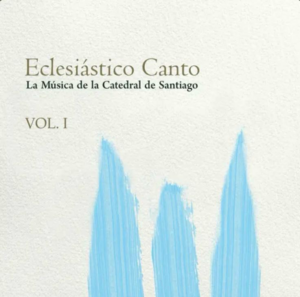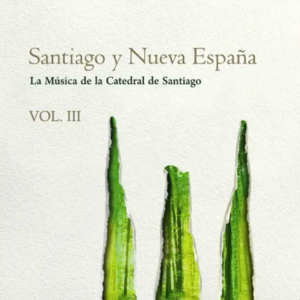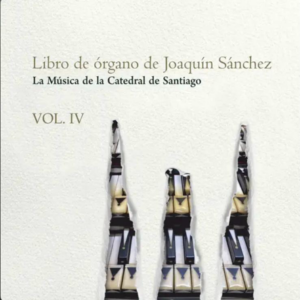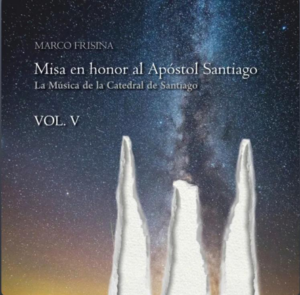Culture
Catedral de Santiago Foundation
The Catedral de Santiago Foundation was established on July 23, 2008. It is registered in the Reinstatement of Fundacións de Interese Galego, of the Xunta de Galicia.
Its aims are the promotion and diffusion of the Cathedral of Santiago de Compostela, its surroundings and its artistic and cultural heritage; as well as the management and exploitation of the infrastructures of the Cathedral of Compostela and its artistic and cultural heritage.
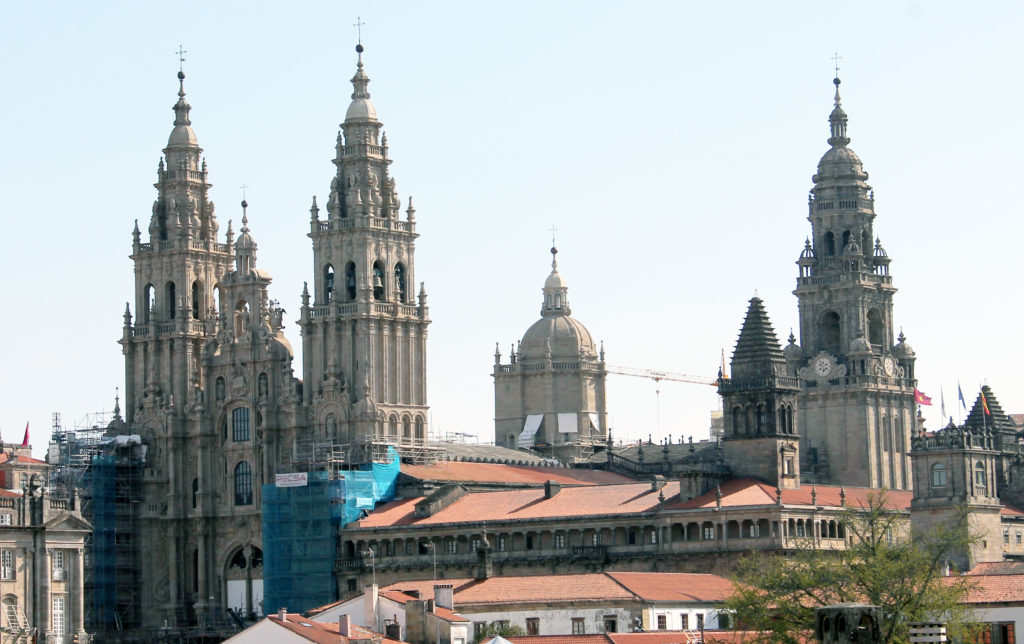
Museum

From Monday to Sundday, from 10 am to 8.
Tickets give access to various spaces and artistic collections of the Cathedral.
> Permanent collection – Cloister – Treasure and Chapel of Relics.
> Pazo de Xelmírez – Master Mateo Space.
> Pórtico de la Gloria.
> Roofs and Ratchet Tower.
In addition, the Compostela Sacra program, promoted by the Fundación Catedral de Santiago, makes it possible to visit the museum, cloister and church of Santa María de Sar.
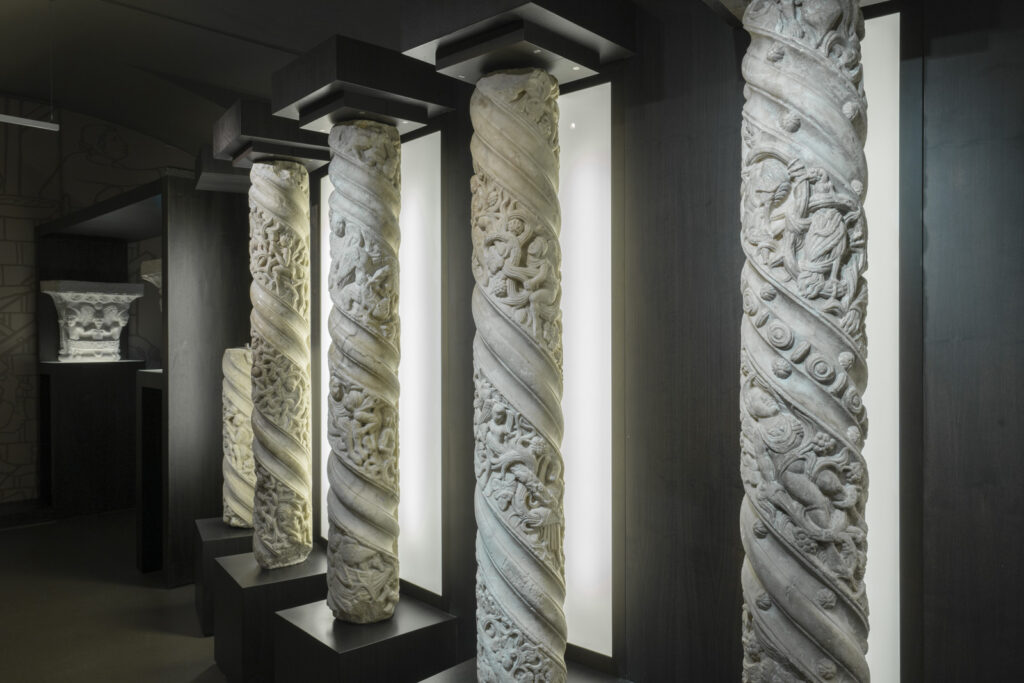
A visit to the history and art of the Cathedral of Santiago through its best works of art. Visitors can journey back in time and discover how from a sepulchre a great cathedral is built. Around it, over the centuries, a city developed together with the Saint James phenomenon and The Way, which has played an important role in the building of the European identity and which has been a World Heritage Site since 1985.
- Ground floor: The origins of the Cathedral / Master Mateo’s Stone Choir / The building of the Romanesque cathedral
- 1st Floor: 13th and 14th century art in the Cathedral / 16th, 17th and 18th century art in the Cathedral / The Apostle Saint James
- 2nd Floor: Renaissance cloister / Chapel of the Relics / Royal Pantheon / The Cathedral’s Treasury / Chapter Library / Botafumeiro / Chapter Room
- 3rd Floor: Collection of textile art / Tapestries by Rubens / Tapestries by Teniers / Tapestries by José del Castillo / Tapestries by Goya / Obradoiro balcony
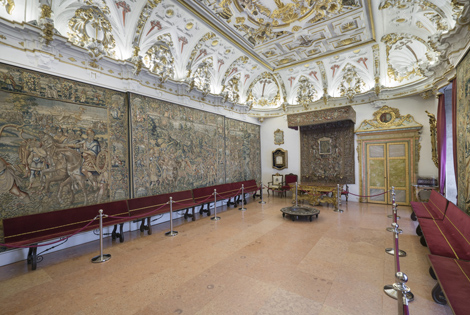
Romanesque style civil building annex to the Cathedral. It owes its name to Diego Gelmírez, first Archbishop of Compostela and promoter of the monuments ensemble. It is a splendid medieval architectural ensemble with Hall of Arms, Manrique Room, and Kitchen. Especially remarkable is its Ceremonial Room, with monumentally grandiose and beautiful decoration with illustrated corbels representing a royal banquet. It houses temporary exhibits and Master Mateo’s Space.

The Portico of Glory is the western entrance to the Romanesque cathedral. It was designed by the genius of Master Mateo, whose atelier of stonemasons interpreted the passages of the Apocalypse in stone. It is considered a masterpiece of universal art. Visitors may witness the restoration works, made with the patronage of Fundación Barrié.
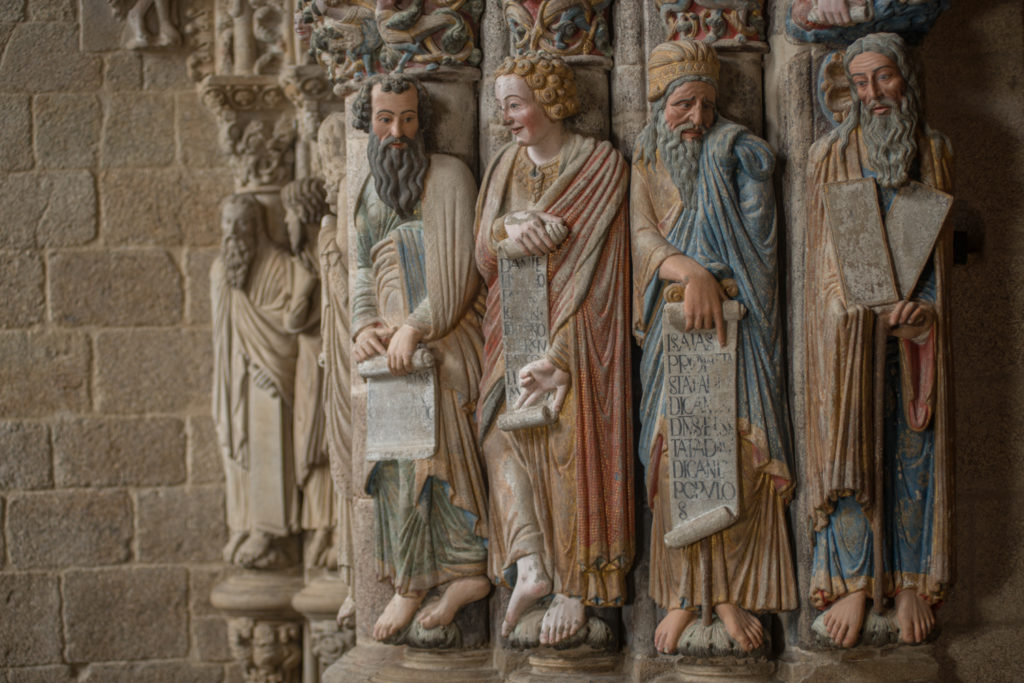
The stone rooftops of the Cathedral of Santiago are laid out in a staggered form and they can be visited. They offer spectacular views both of the basilica as of the city of Santiago de Compostela.
*Closed temporarily, for restoration works
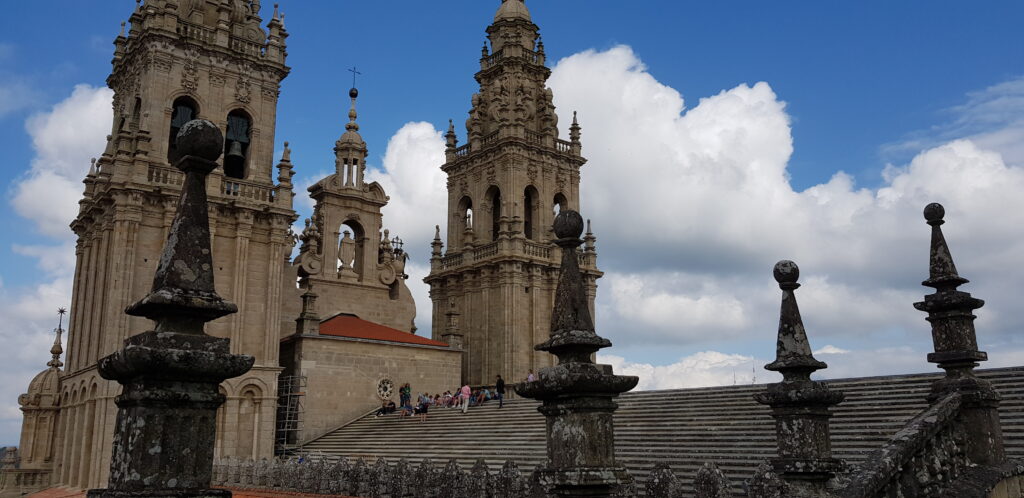
To save the slope between the head and the western end of the cathedral, Master Mateo came up with the construction of a crypt, unique in its form and function in the Galicia of the time.
It is a space of great architectural complexity, organized by a large pillar from which the arches that support the vaulting start. Also noteworthy are the capitals and the two angels of the keystones of the vaults of the transept, one carrying a sun and the other a moon, in clear allusion to the earthly world.

In the subsoil of the Cathedral, the archaeological excavations carried out during different periods have unearthed many vestiges of the origins of the basilica and of the city. Under the floor an intricate network of necropolis that began in Roman times and lasted until the construction of the Romanesque cathedral can be found, as well as the remains of the early basilicas and part of the first defensive wall around the city of Compostela.
*Closed temporarily.
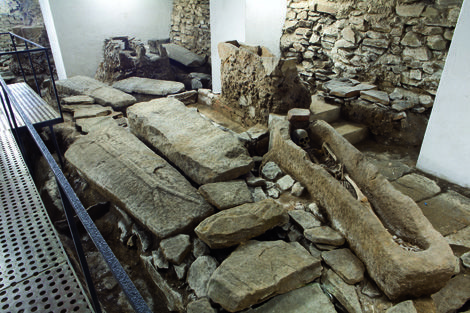

Digital Catalog
The Fundación Catedral de Santiago is promoting a project to digitize part of its cultural heritage and artistic collections. It is, firstly, to have digital resources for the documentation and conservation of the pieces and, secondly, to improve the public access to these works of art, some of them masterpieces to the history and art of Galicia.
This digital fund will be stored in a repository installed in the Museo Catedral, which will be a digital capsule of the cultural memory of the Cathedral of Santiago.
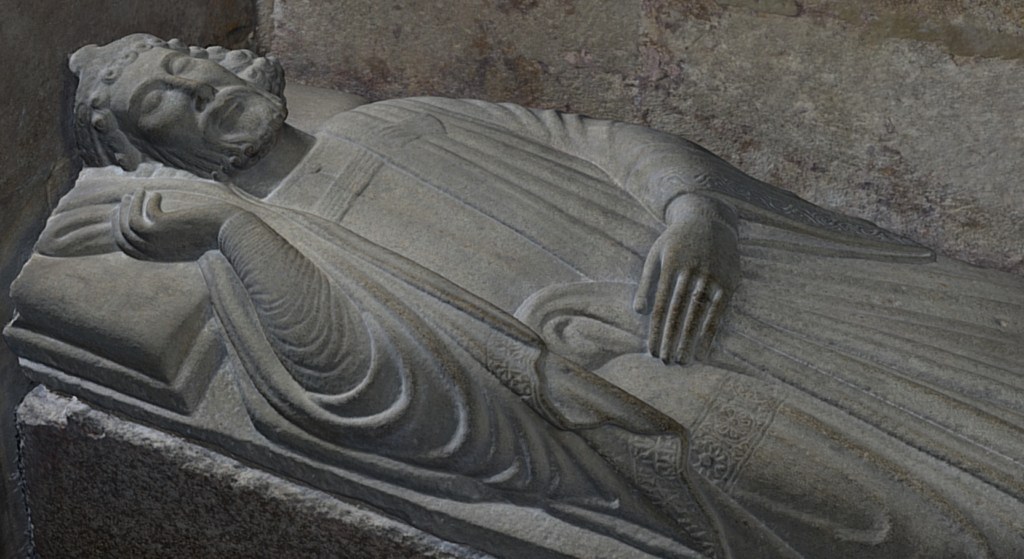
Archive-Library
Among the services offered by the Cathedral of Santiago Archive-Library (ABCS), the guided tours are an instrument for cultural activation, to attract society and educate users. Its purpose is to share the wealth of the documentary and bibliographic collections that it keeps (which include the Codex Calixtinus, Cartulary A and the Breviary of Miranda). But its purpose is also to disseminate the documentation and preservation technical works carried out in its interior, as well as to confirm the identity and memory of the Church and of the society it forms part of. All in all, the services it fulfils dissemination, cultural, educational, social and pastoral services.
Guided tours for groups between 6 and 15 people.
a) Special tours:
- Tuesday and Thursday at 11:00 am.
- Approximate duration: 1 hora.
- Price: 15 euros/person
b) Educational tours:
- Subject to availability.
- Approximate duration: 45 minutes.
- Price: 3 euros/ person
Information and bookings at: 981575609 or by email to archivo@catedraldesantiago.es (during opening hours).
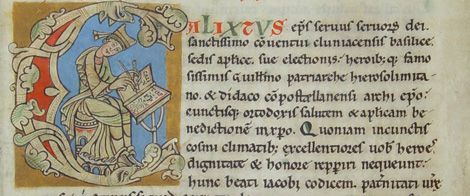
The Archive of the Cathedral of Santiago, no doubt one of the most important in Europe, houses books and documents of a high artistic value, whose origins go back as far as the first centuries of the Middle Ages. Together with the Library it is the trustee of the history of the Compostela See.
The same building houses the Archive, which guards and is responsible for the organisation, classification and service of the chapter documents. The Library, which amasses important collections from the 15th to 19th centuries, as well as other collections focused on documentation and support for research is also located here. Both work as a single activity, following common regulations and parameters that focus on facilitating the work of researchers.
Acceso: Sacristy (users must first be accredited at the Security Control Centre, located on the Treasury corridor).
Hours: from Monday to Friday, from 9:00 am to 1:30 pm. From Monday to Wednesday, from 4:30 pm to 7:00 pm.
Telephone: 981 575 609
Contact:
- Archive (general matters): archivo@catedraldesantiago.es
- Medieval documentation area: medieval@catedraldesantiago.es
- Modern and Contemporary Documentation Area: moderna@catedraldesantiago.es
- Library (general matters): biblioteca@catedraldesantiago.es
- Journal Annuarium Sancti Iacobi: annuarium@catedraldesantiago.es
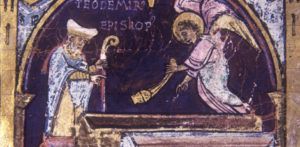
- Library services
- Norms for access and consulting
- Norms for loans for exhibits
- Norms for reproducing
- Click here to download the application form for reproducing documents and images from the ABCS for private use
- Click here to download the application form for reproducing documents and images from the ABCS for public use
- Click here to download the application form for borrowing documentation for temporary exhibits
- Click here to download the application form for borrowing documentation of bibliographical collections for temporary exhibits
- Click here to download the application form for attested copies of documents from ABCS
- Click here to see the reproduction rates of the ABCS
- Entities that collaborate with the Archive-Library
The Archive of the Cathedral of Santiago (ACS) is a private historical archive owned by the church and dependent on the Council of the Cathedral of Santiago. It keeps, preserves and serves the historical documentation it generates as it performs its activities, as well as that of other institutions related to it. It is managed by the Archivist-Librarian, a stable post whose functions correspond to a canon or may be temporarily carried out by staff who are not members of the Council, under the conditions established for each case with the agreement of the Archbishop. According to the Estatutos de la S.A.M.I. Catedral de Santiago de Compostela (Bylaws of the Holy, Apostolic and Metropolitan Church of the Cathedral of Santiago de Compostela), his competencies are:
- Preserve and catalogue the document and bibliographic collections, as per the valid norms. He will also be in charge, in coordination with the master canon of the chapel, of the preservation and growth of the Musical Archive.
- Increase the Chapter Library, especially with publications related to the Saint James theme.
- Provide access to the Archive and Chapter Library to researchers for the time and under the conditions established by the Cathedral Council. The documents and books may not be removed from the Archive or Library as loans, but must be consulted in situ.
- Inform the Cathedral Chapter regarding any matters that concern it.
According to the Regulation for Spanish Ecclesiastic Archives, “the cathedral archive consists not only of historical information, but also of all the historical documentation that is preserved therein, both the modern and also the one which is kept by the different council commissions, posts or offices. Once it has served its administrative purpose the documents must enter the archive in full order to become part of the documentary testimony of the life of the council”. This definition corresponds more accurately with that for the cathedral archives system, where the ACS functions as a chapter archive and periodically receives transfers from the cathedral administrative offices: Secretary (after forty years), Administration, Building, Museum and Pilgrimages.
Chart for the classification of Collections
In the Library of the Cathedral of Santiago ancient volumes, some incunabula, can be found alongside the most recent works of reference and published research. This fact reflects the triple dimension of the centre: chapter library, Saint James library and auxiliary library to the Cathedral Archive.
Through the donations by the precentor Alonso Sánchez de Ávila and Archbishop Álvaro de Isorna, the cathedral library was completed in 1454 and it was located in one of the cloister towers. It consisted of an ensemble of books put together to cover the needs of the canons: liturgical and biblical texts, which they used for their worshipping, and legal works, which they used to defend the interests of the cathedral Council, to advise the prelate or for their tasks of archbishop audience. The first documented reference to the temporary charge of guardian or doorman of the library is from the second half of that century. The guardian was in charge of the custody of the cathedral library, whose functions were constitutionally established by archbishop Gaspar de Zúñiga (1569): having the key to the library, opening it two days a week during established hours, cleaning the books and the library; remaining inside to prevent thefts.
After the founding of the University of Santiago, where from the beginning the most intellectually valuable canons were professors, the interest of the Council in its own library dwindled. This would explain its small size during the entire Modern Era, as mentioned by Ambrosio de Morales. It was not until the Enlightenment when the bases were established for what would later be the Chapter Library―which today can be visited as part of the cathedral’s museum itinerary―thanks to the testamentary donations from the canon maestrescuela (head of the Cathedral school), Diego Juan de Ulloa (1762) and the prior from Sar, Pedro Acuña y Malvar (1814).
With the general opening to the public of the Cathedral Archive in the 1980s, the role of the Library as the auxiliary centre for research carried out in the archive was strengthened. But with the new century two events took place which established the Saint James orientation of the Cathedral Library. The first was the approval, in the chapter session of 27 June 2000, of the general plan for the creation of a Saint James Documentation Centre. The second, which took place on the following year, was the allocation of a specific place for the creation of the Saint James Library.
Click here to browse the Bibliographical Collection
Click here to acces the Opac website for Bibliographical Collections

The Cathedral Archive-Library has promoted cultural dissemination through activities such as exhibits, conferences, presentations, guided tours, webs and blogs, etc, but also through the publication and joint publication and distribution of various of its own works or works on the Cathedral of Santiago de Compostela.
With respect to the publications by the ABCS (Spanish acronym for “Cathedral of Santiago Archive-Library”), collections, journals, monographs and exhibit catalogues were published, highlighting:
- The Colección Histórico-Documental de la Iglesia Compostelana, which began in 1998 and is devoted to the publication of monograph studies on medieval history, modern history, history of art, philology and musicology and, above all, to the systematic transcription of the most interesting documents that are kept at the Cathedral Archive.
- The Colección Archivium Sancti Iacobi, which began in 2007 with an initial series for the publication of Instrumentos de descripción from the Cathedral Archive.
- The journal Annuarium Sancti Iacobi which began in 2012 and whose common denominator is the documentary sources, research and works related to or issued by the ABCS, as the cultural expression of that centre, also including works on the documentation of the Church Archives and Libraries and, in general, on ecclesiastic documents.
The publications may be obtained through purchase, subscription or exchange. The Catálogo de venta de publicaciones can be browsed (Catálogo de publicaciones). To view the journal Annuarium Sancti Iacobi, you may visit the website www.annuariumsanctiiacobi.org. For the exchange of all the other publications from the ABCS, there is a bulletin of duplicates available.
If your institution would like to participate in this bibliographic exchange programme with the ABCS, please write a letter of proposal to our email or postal address (biblioteca@catedraldesantiago.es), attaching a copy of the publication to exchange or your institution’s publications catalogue. Clearly specify your postal address for deliveries.
Music
Currently, the Cathedral of Santiago has two choirs that participate in the vast majority of solemn celebrations throughout the year.
Escolanía
The Children´s Choir or Escolanía, known as the “Angels of Compostela,” was founded by Mariano Pérez Gutiérrez shortly after he was appointed choirmaster in 1964. This initiative provided many children from Compostela with their first contact with music and, in many cases, the decisive experience they needed to become professional musicians. This white-voiced choir was created to solemnize the liturgy of the Compostela Cathedral, but soon gained great prestige, even participating in the famous Loreto (Italy) competition, where they had the opportunity to sing a Mass broadcast throughout Europe on Eurovision in April 1968.
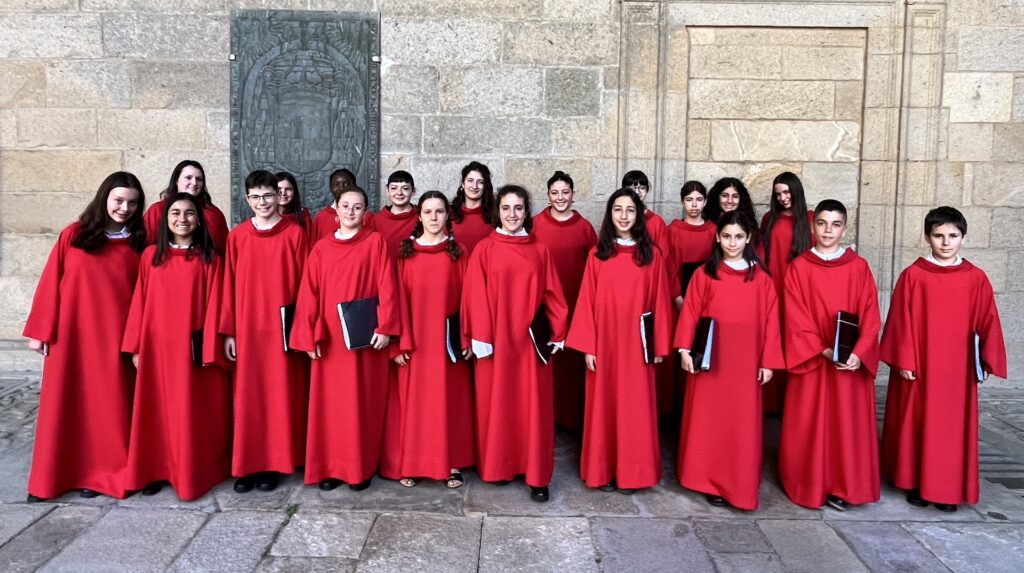
Nemesio García Carril (1969-1980) and Xavier Méndez continued the work of the Choir from 1982 onward, but his sudden death a year later forced the choir into a long period of inactivity. In 2008, the Cathedral Chapter decided to re-establish the Choir and entrusted this task to José Luis Vázquez. He has ensured that the voices of the “Angels of Compostela” once again resonate within the cathedral walls and beyond. They have had a significant presence in the city’s musical scene, participating in festivals and collaborating with prominent groups and artists. They also have a recording: “A la puerta del Paraíso” (At the Gate of Paradise).
Currently, the choir has 25 voices and is directed by Sofía Remedios Rodríguez Fernández, who keeps alive the spirit of its founding: to be a benchmark for choral singing in the city and a place of musical training for children from Santiago de Compostela and its surrounding area.
Contact: escolania@catedraldesantiago.es
Coro Cardenal Quiroga
The “Cardenal Quiroga” Choir of Santiago Cathedral was founded in 2015 at the initiative of the Chapter and under the direction of José Luis Vázquez. This choir expanded the Cathedral’s musical offering. Currently, it consists of 50 choristers and its function is to solemnize celebrations, encourage the faithful’s participation, and also complement the existing choral scene in the city. In its still short existence, apart from its performances at the Cathedral, it has also given numerous concerts and collaborated with various cultural initiatives in the city. Since 2024, it has sung under the direction of Sofía Remedios Rodríguez Fernández.

Collaborating choirs
Occasionally, for specific celebrations, other high-quality and prestigious choirs collaborate at the cathedral, such as Capela Antiga, directed by Miro Moreira, who has directed the Cathedral’s Music Chapel since 1988. The Orfeón Terra a Nosa, currently directed by Luis Martínez, has also collaborated.
Visiting choirs
Due to the large number of pilgrimages that come to the Cathedral of Santiago throughout the year, many choirs wish to participate in one of the pilgrim masses. To do so, they must request it one month in advance by writing to direccionmusical@catedraldesantiago.es.
This choral ensemble is joined by a team of three singers who participate in the 9:30, 12:00, and 7:30 masses throughout the year.
The Cathedral organ was built by the Mascioni company (Cuvio-Varese, Italy) in 1977. It is the only instrument from this firm installed in Spain. The inaugural concert took place on March 17, 1978, by the German Erich Arndt, then organist of St. Peter’s in Rome.
The organ is divided into two sections located on either side of the central nave. The Baroque organ cases were carved by Antonio Alfonsín and Miguel de Romay at the beginning of the 18th century. Although the instrument incorporates some pipes from earlier organs, it should be considered a new work, as most of the pipework and all other elements are by Mascioni. The keys are slide-type, and the drive is electromechanical. The arrangement of the three keyboards and pedals in the cases is as follows: great organ (II) and recitative-expressive (III) on the Gospel side, and positive (I) and pedals on the Epistle side. The console contains numerous accessories available to the organist: plates, buttons, reversible piston pedals, and rocker pedals. These elements are used to set or cancel adjustable combinations, activate or deactivate groups of pieces, join pieces together when they belong to different keyboards, activate the general crescendo, the tutti, etc. In June 2005, Mascioni renovated the organ’s drive, incorporating an electronic combinator whose software can store three programmable crescendos and 2,490 combinations that can be copied to memory cards. These combinations can be activated successively with forward and reverse devices during performance.
The Compostela chapter attaches great importance to the cathedral organ, which is why it employs three professional organists who play it daily at the pilgrim masses at 9:30, 12:00, and 19:30.
Mascioni Organ – Layout
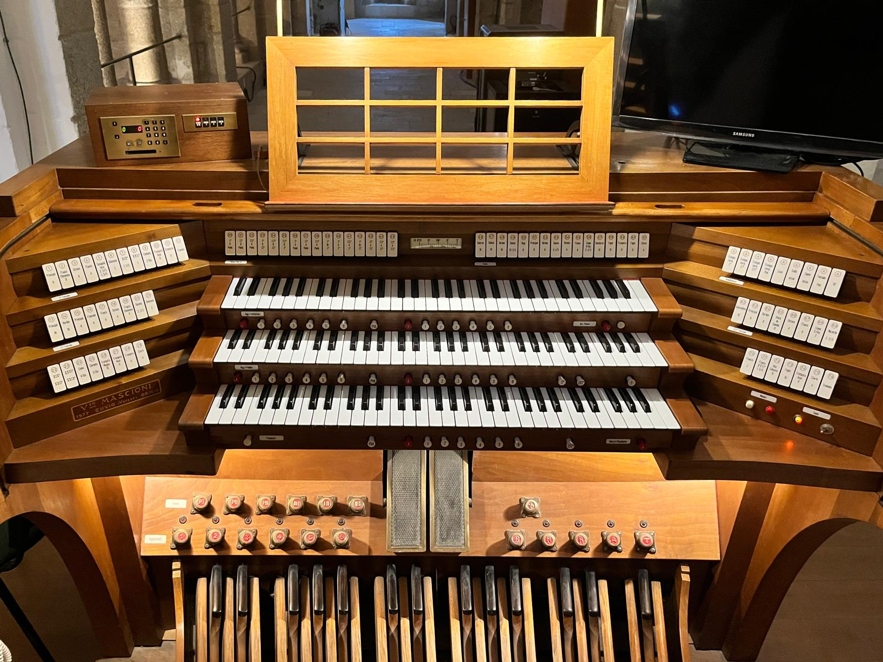
In recent years, the Cathedral has been completing a musical collection called “The Music of the Cathedral of Santiago.” These publications are available on CD in the cathedral shop and also in MP3 format on all music platforms.
Vol. I – Eclesiástico Canto
Compositions by José de Vaquedano (1642-1711)
Capilla Musical de la Catedral
Conductor: Miro Moreira
Vol. II – Palabra hecha música
Plainchant and polyphony
Capilla Musical de la Catedral / Coro de la USC
Capela Compostelana
Conductor: Miro Moreira
Vol. III – Santiago y Nueva España
Music on both sides of the Atlantic
Capilla Musical de la Catedral / Coro de la USC
Capela Compostelana
Conductor: Miro Moreira
Vol. IV – Libro de órgano de Joaquín Sánchez
Organist: Roberto Fresco
This publication was completed with the edition of the Organ Book by Joam Trillo I.S.B.N.: 987-84-0955443-0
Vol. V – Misa en honor al Apóstol Santiago
Composer and conductor: Marco Frisina
Real Filharmonía de Galicia / Schola Antiqua
Orfeón Terra a nosa / Escolanía de la Catedral
Organist: Adrián Regueiro
